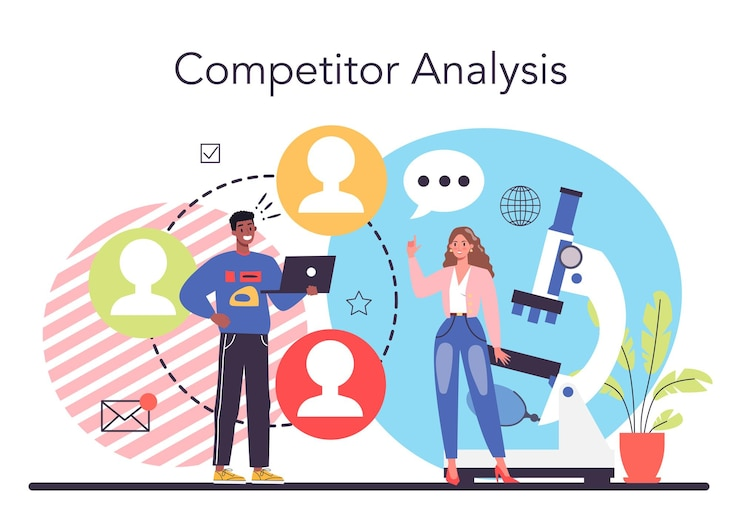How to Do Competitive Research Without Wasting Hours
Learn how to do competitive research efficiently without wasting hours. Discover practical tips, tools, and templates to quickly analyze competitors and make smarter business decisions.
6/27/20253 min read


In today’s fast-moving business environment, understanding your competitors is essential—but spending hours digging through data can drain your time and energy. Competitive research doesn’t have to be a tedious, overwhelming process. With a clear plan and the right tools, you can gather valuable insights quickly and focus on strategic decisions that propel your business forward.
This article outlines actionable steps to do competitive research efficiently—helping you save time while uncovering key opportunities and threats in your market.
1. Define Your Research Goals Clearly
Starting your competitive research without clear objectives is like sailing without a compass. Knowing exactly what you want to learn helps you avoid distractions and focus on relevant data.
Before collecting information, answer these questions to sharpen your focus:
Are you analyzing pricing strategies, marketing tactics, product features, or customer sentiment?
Do you want to identify gaps in the market or benchmark your performance?
What decisions will this research inform—product development, advertising, or sales?
Having clear goals narrows your scope and helps you focus on high-impact information.
2. Identify Your Top Competitors Quickly
Not all competitors are created equal. Prioritizing the most impactful competitors ensures your research stays relevant and manageable.
To quickly pinpoint your main rivals, consider these approaches:
Use Google searches with key terms related to your niche.
Check industry reports and directories.
Use tools like SEMrush or Ahrefs to find who ranks for your target keywords.
Ask your customers or network about alternatives they consider.
Limiting your list to 3-5 main competitors keeps research manageable and relevant.
3. Use Competitive Research Tools to Speed Up Data Collection
Manual data gathering is time-consuming and prone to error. Thankfully, there are several online tools designed to collect and analyze competitor data efficiently.
Here are some popular tools and what they help you uncover:
Website Analysis: Use SimilarWeb or Alexa to view traffic sources and audience insights.
SEO and Keywords: Tools like SEMrush, Ahrefs, or Moz show which keywords competitors rank for, backlink profiles, and content strategies.
Social Media Monitoring: Platforms like Hootsuite or BuzzSumo track competitors’ social engagement and popular posts.
Pricing and Product Comparison: Use apps or websites that track prices and product features to quickly spot differences.
Many tools offer free trials or limited free versions, so you can test them before committing.
4. Analyze Competitor Content Efficiently
Reading every competitor blog or report is neither practical nor necessary. Instead, focus on extracting key insights quickly to inform your strategy.
Here’s how to skim and extract the most valuable information:
Focus on headlines, product announcements, and pricing updates.
Identify common themes and unique selling propositions.
Note how competitors position themselves and the problems they solve.
Use content summaries, newsletters, or RSS feeds to keep updates coming to you without active searching.
5. Create a Competitive Research Template
Organizing your data prevents overwhelm and turns raw information into actionable insights. A template makes ongoing research faster and comparisons easier.
Your template should include these key columns to capture competitor intelligence:
Competitor Name
Products/Services Offered
Pricing
Marketing Channels Used
Strengths & Weaknesses
Unique Features
Customer Feedback Highlights
This approach turns scattered data into actionable insights quickly.
6. Schedule Regular But Brief Check-Ins
Markets evolve quickly, but continuous deep dives are inefficient. Regular, focused updates help you stay informed without burnout.
To keep your research fresh without spending excessive time:
Set a weekly or monthly time block (30–60 minutes) to update your research.
Use alerts from Google or tools like Mention to track competitor news automatically.
Focus on significant changes or new product launches.
Consistent small check-ins keep you informed without overwhelming your schedule.
Final Thoughts: Work Smarter, Not Harder
Competitive research is a vital business practice, but it doesn’t have to consume your day. By setting clear goals, focusing on key competitors, leveraging automated tools, and organizing your data efficiently, you can gain deep market insights in a fraction of the time.
Focus your efforts on analyzing what truly matters, so you can make smarter strategic decisions faster. This lean approach helps you stay ahead without burnout or wasted hours.
Sarava Pro offers expert guidance and ready-to-use templates to simplify your competitive research process. Let us help you save time and make smarter business decisions with ease.








SARAVA PRO
Expert virtual assistance for your business needs.
Contact us
Focus
+91 9952642607


